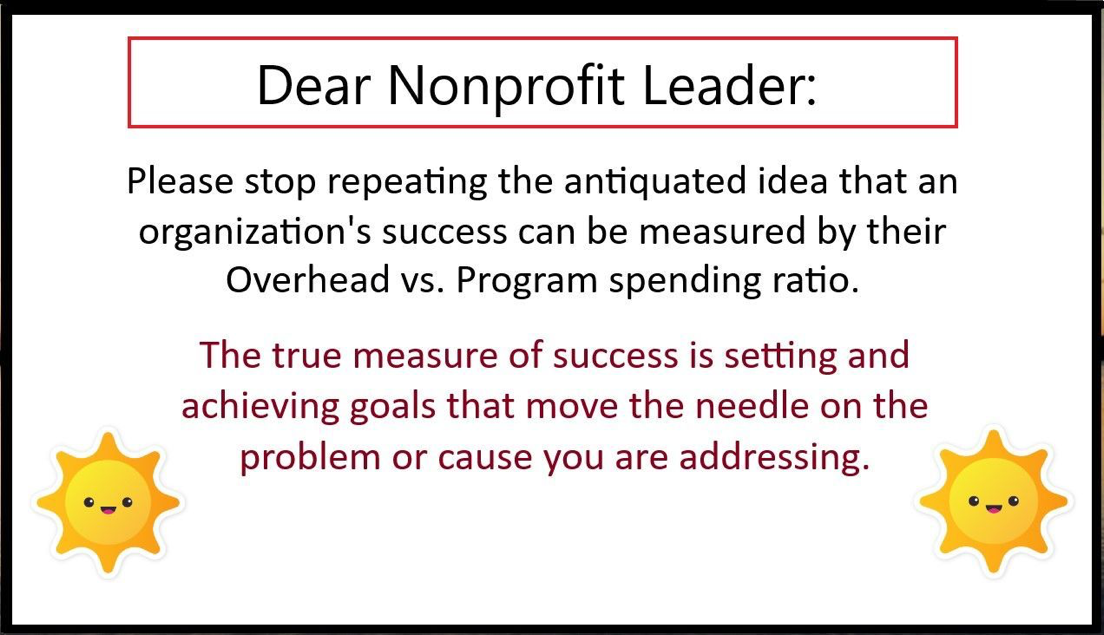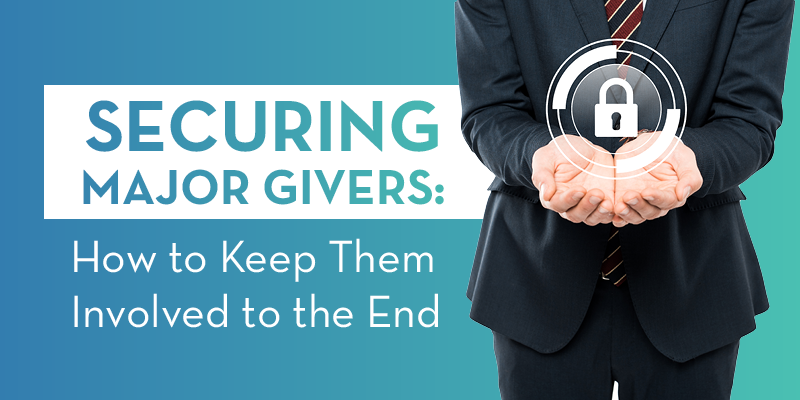In the world of nonprofits and social enterprises, there's a persistent myth that an organization’s success can be distilled into a single metric: the ratio of overhead to program spending. This outdated measure, often cited by donors and evaluators, suggests that organizations with lower overhead costs are more efficient and thus more effective. However, this simplistic view overlooks the true drivers of impact and can mislead both funders and organizations themselves. It’s time we reframe how we measure success and focus on what really matters: achieving meaningful goals.
[*With apologies to the image creator. This image inspired this post.]
You know this already, but I feel compelled to write about it: Nonprofit organizations are dedicated to making a positive impact on society by addressing social, cultural, and environmental issues. To achieve their mission and goals, nonprofits need to have a clear and effective strategic plan. A strategic plan is a roadmap that guides an organization in achieving its long-term objectives while aligning its resources, activities, and priorities. In this blog, we'll discuss the importance of nonprofit strategic planning and the key elements of a successful strategic plan.
Being an executive director can be a rewarding job, but it can also be incredibly stressful and demanding. As the leader of a nonprofit organization, an executive director is responsible for everything from fundraising and program development to staff management and board relations. With so many responsibilities and a constant need to balance competing priorities, it's no wonder that executive director burnout is a common problem.
Online fundraising is a popular method for earning donations used by individual fundraisers and nonprofits alike. These campaigns leverage well-designed websites, livestreaming platforms, social media, and other digital tools to raise money for their causes in a fast and effective way.
But if you’ve yet to make the move to virtual strategies, you might be asking yourself why online fundraising matters for organizations like yours. Perhaps you feel as if you’ve made do with traditional fundraising strategies for this long, so there’s no reason to shake things up now. However, these modern fundraising ideas and resources have the power to bring your campaigns to the next level.
Let’s say you’ve launched a capital campaign to renovate your nonprofit’s facility. At the beginning of the project, you secure a handful of major donors who will support the larger financial costs of the investments. Months later, with lots of hard work, you’ve raised the rest of the funds from mid-level and smaller donors and, after a year of construction, the project is finally completed.
However, as you’re about to cut the ribbon to unveil the renovation, you look around and notice that some of the major givers who you connected with early on in the project have not made an appearance. In fact, you realize, you haven’t had many conversations with them in months.
In the virtual age, it’s not just Millennials and Gen Z who are using technology to stay connected. Virtual interactions are a fact of life for all demographics. So much of daily life, from work to socializing to shopping, now takes place online, and that includes many aspects of nonprofit management.
As a volunteer coordinator, that means you must adjust your volunteer engagement strategy to continue connecting with supporters in a digital-first environment. This has become especially important both during the height and in the aftermath of the COVID-19 pandemic since you more than likely reduced your in-person activities to keep volunteers and staff members safe.





